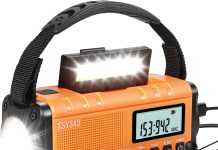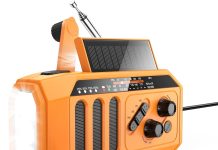Imagine a time when the continuous chatter of CB radios filled the airwaves, connecting truckers across the vast highways of America. These radios acted as a lifeline for these lone pioneers of the open road, providing not only entertainment but a crucial means of communication. However, as technology advanced and new avenues of communication emerged, the once ubiquitous presence of CB radios gradually faded away. Wondering why truckers made this transition and what caused the decline of CB radios? Let’s explore the reasons behind the disappearance of these once essential companions of the trucking community.
Review contents
The Rise of CB Radios in the Trucking Industry
Introduction to CB radios in the trucking industry
CB radios, or citizens band radios, have played an integral role in the trucking industry for several decades. These two-way radios allowed truckers to communicate with one another, sharing valuable information about road conditions, traffic congestion, and potential hazards. With their range of up to a few miles, CB radios provided a way for truck drivers to stay connected and ensure a smoother flow of goods and services on the highways.
Early benefits and popularity of CB radios among truckers
In the early days of the trucking industry, CB radios quickly gained popularity among truck drivers due to their numerous benefits. Firstly, CB radios provided a sense of camaraderie among truckers, creating a tight-knit community where they could forge friendships and offer support to one another. Secondly, CB radios allowed for real-time communication, enabling truckers to exchange information efficiently and accurately. This led to improved safety on the roads and increased efficiency in the delivery of goods. Additionally, CB radios were cost-effective and easy to install, making them accessible to truckers of all backgrounds.
Advancements in Technology and Communication
Emergence of cell phones and their impact on communication
With the rapid advancements in technology, the emergence of cell phones brought about significant changes in the way people communicate, including those in the trucking industry. Cell phones offered a level of convenience and accessibility that CB radios couldn’t match. Truckers could now make direct calls to other drivers, dispatchers, or even loved ones, without the limitations imposed by radio channels or time constraints. The ability to have private conversations was a major advantage, especially in situations where sensitive or personal information needed to be shared.
Affordability and convenience of mobile phones
One of the primary factors contributing to the decline of CB radios among truckers was the increasing affordability and convenience of mobile phones. As the prices of cell phones decreased, more truckers found it economically feasible to switch to this new mode of communication. Moreover, cell phones offered the added benefit of multifunctionality, allowing truckers to access various applications, maps, and GPS systems to enhance their driving experience. With mobile phones becoming an essential tool for everyday life, truckers began to rely less on CB radios as their primary means of communication.
Growth of the internet and online communication platforms
The growth of the internet and the rise of online communication platforms further contributed to the decline of CB radio usage. Truckers began to embrace the convenience and efficiency of online platforms, such as email, instant messaging, and social media. These digital platforms provided an avenue for truckers to connect with their peers, share information, and stay updated on industry news. Additionally, online platforms allowed for more organized and targeted communication, as truckers could join specialized forums or groups tailored to their specific interests and needs.
Decline of CB Radio Usage
Decreased relevance of CB radios due to technological advancements
As technology continued to advance, CB radios gradually lost their relevance in the trucking industry. The limited range of CB radios paled in comparison to the wide coverage provided by cell towers, making them less effective for long-distance communication. Moreover, CB radios lacked the advanced features and functionalities that modern communication devices offered, such as text messaging, internet browsing, and multimedia capabilities. Truckers began to gravitate towards options that provided a more holistic and comprehensive communication experience.
Limitations and drawbacks of CB radios
While CB radios served a crucial role in the past, they were not without their limitations and drawbacks. One of the main challenges faced by truckers using CB radios was the overcrowding of available channels, leading to interference and difficulty in finding a clear frequency. Additionally, CB radios were subject to atmospheric and geographical limitations, which affected their signal strength and clarity. These limitations made CB radios less reliable in certain areas, limiting their effectiveness as a communication tool. As truckers sought more reliable and efficient communication solutions, they turned to alternative options that offered better performance and range.
Dwindling CB Radio Community and Channels
Shift towards alternative communication platforms
As truckers shifted towards alternative communication platforms, such as cell phones and online forums, the CB radio community began to dwindle. The once vibrant and active channels began to go silent, as truckers sought connections and conversations through other means. The decline in CB radio usage not only affected the sense of community and support among truckers but also had implications for the dissemination of valuable information about road conditions and potential hazards. As the CB radio community diminished, so did the availability of real-time, localized insights that were essential for smooth and safe trucking operations.
Decreased social aspect of CB radios
One of the primary appeals of CB radios was the social aspect they provided for truckers. CB radios allowed truckers to engage in casual conversations, share stories, and build friendships while on the road. However, as technology advanced, truckers found other avenues for social interaction that offered a wider range of opportunities. Online forums and social media platforms provided truckers with the ability to connect with a broader network of individuals, interact with different communities, and share their experiences on a larger scale. The allure of these digital platforms, coupled with the fading CB radio community, saw a decrease in the social aspect and camaraderie once associated with CB radios.
Regulatory Changes and CB Radio Usage
Impact of regulatory changes on CB radios
Regulatory changes within the trucking industry also had an impact on CB radio usage. As rules and regulations governing the trucking industry evolved, so did the requirements for communication devices used by truckers. Certain jurisdictions and transportation authorities began to encourage or enforce the use of more advanced communication technologies that adhered to specific standards. This shift towards standardized communication tools and protocols led to a decreased emphasis on CB radios, which were considered less compliant with these regulations. Truckers had to adapt to these changes and shift towards using communication devices that aligned with the new regulations.
Increased restrictions and licensing requirements
In addition to regulatory changes, increased restrictions and licensing requirements also played a role in the decline of CB radio usage. As concerns around driver distraction and road safety grew, authorities implemented stricter rules regarding the use of communication devices while driving. Many jurisdictions now require truckers to obtain specific licenses or certifications to use certain communication tools, such as two-way radios. These additional requirements and the associated costs discouraged truckers from relying solely on CB radios, prompting them to explore alternative options that were more in line with the evolving regulations.
Safety and Security Concerns
CB radios as potential means for illegal activities
While CB radios were primarily used for legitimate communication purposes, there were instances where they were misused for illegal activities. The open nature of CB radio frequencies meant that conversations were not private and often could be intercepted by unauthorized individuals. This made CB radios a potential tool for unlawful activities, such as transmitting false information, coordinating illegal operations, or partaking in illicit trades. As concerns for safety and security grew, truckers became more wary of using CB radios and sought communication options that offered a higher level of privacy and confidentiality.
Increase in privacy concerns and need for confidentiality
The growing emphasis on privacy and the protection of personal information also contributed to the decline in CB radio usage. With the increasing awareness of data breaches and unauthorized access to communication systems, truckers began to prioritize the security of their conversations. The open-airwaves nature of CB radios made them susceptible to eavesdropping and unauthorized monitoring. As modern communication options offered encryption, secure channels, and the ability to restrict access to conversations, truckers shifted their preferences towards more secure and confidential communication platforms, further reducing the relevance of CB radios.
Changing Culture and Preference Among Truckers
Shift towards individualistic communication preferences
As the trucking industry evolved, truckers’ communication preferences shifted from a communal experience to more individualistic approaches. The desire for personalized communication experiences and the ability to control who they communicate with became increasingly important. While CB radios provided a broadcast-style communication where conversations were open to anyone tuned into the same frequency, truckers opted for more focused and exclusive modes of communication. This shift allowed them to establish direct lines of communication with specific parties, enhancing efficiency and reducing distractions.
Preference for direct communication with specific parties
The preference for direct communication with specific parties was also influenced by the increasing complexity of the trucking industry. With the rise of supply chain management and the need for precise logistical coordination, truckers required clear and direct communication channels with dispatchers, clients, and other stakeholders. The ability to establish one-on-one conversations enabled truckers to relay information accurately, receive immediate responses, and resolve issues more efficiently. As a result, the broad and indiscriminate conversations facilitated by CB radios became less desirable, further contributing to their decline within the trucking industry.
Availability of Alternative Communication Options
Emergence of alternative communication devices and platforms
As CB radios lost their dominance in the trucking industry, alternative communication devices and platforms emerged to fulfill the evolving needs of truckers. Mobile phones, smartphones, and satellite phones became the go-to options for truckers, offering broader coverage, advanced features, and reliable connectivity. The availability of hands-free devices and Bluetooth technology further enhanced the convenience and safety of using mobile phones while driving. Additionally, specialized communication platforms and applications designed specifically for the trucking industry provided customized functionalities and industry-focused services, catering to the unique requirements and challenges faced by truckers.
Advantages and features of alternative communication options
The advantages and features offered by alternative communication options played a significant role in their adoption among truckers. Mobile phones provided seamless and instant connections with individuals around the world, ensuring truckers could stay connected regardless of their location. The integration of GPS systems and map applications within smartphones facilitated navigation and enhanced route planning, optimizing efficiency and reducing travel time. Furthermore, the ability to access real-time traffic updates, weather information, and points of interest through mobile applications brought added convenience and improved decision-making capabilities. Ultimately, the advancements in alternative communication options offered truckers a comprehensive and tailored communication experience that CB radios could no longer match.
Industry Adaptation to New Communication Technologies
Integration of new communication technologies in the trucking industry
The trucking industry recognized the benefits and advantages that new communication technologies offered. As a result, there has been a widespread integration of these technologies within the industry to enhance efficiency and streamline operations. Trucking companies have invested in the implementation of fleet management systems, which incorporate GPS tracking, electronic logging devices (ELDs), and advanced communication platforms. These systems allow for seamless communication between drivers, dispatchers, and other stakeholders, providing real-time updates on shipment status, route optimization, and regulatory compliance. The integration of new communication technologies has revolutionized the trucking industry, resulting in improved productivity, enhanced safety, and increased customer satisfaction.
Benefits and advancements in efficiency
The integration of new communication technologies in the trucking industry has brought about numerous benefits and advancements in efficiency. Real-time communication capabilities have improved the coordination and synchronization of logistics operations, allowing for faster response times and better decision-making. The ability to track and monitor shipments in real-time has minimized delays and enabled more accurate arrival estimations. Moreover, electronic documentation and instant data transfer have reduced paperwork, administrative burdens, and the risk of errors. These advancements in efficiency have paved the way for a more streamlined and agile trucking industry, where communication plays a vital role in maintaining the flow of goods and services.
The Future of CB Radios in the Trucking Industry
Possible scenarios and future outlook for CB radios
While the decline of CB radios in the trucking industry has been evident, it is important to consider the potential scenarios and future outlook for their revival. Some truckers still appreciate the simplicity and nostalgia associated with CB radios, and there may continue to be pockets of the trucking community that rely on them for communication. Additionally, in situations where other communication options may not provide reliable coverage, such as in remote areas or during emergencies, CB radios could still serve as a viable backup option. Overall, while the future of CB radios may not regain their previous prominence, they could still find a niche role in certain contexts within the trucking industry.
Factors that could contribute to their revival
Several factors could potentially contribute to the revival of CB radios in the trucking industry. The ongoing advancements in technology could lead to the development of more robust and efficient CB radio systems, overcoming the limitations that led to their decline. Additionally, regulatory changes or shifts in industry standards could create new opportunities for CB radios to regain relevance. For example, if there were a widespread push for standardized communication protocols that facilitate seamless interoperability between different trucking systems, CB radios could be reevaluated as a viable solution. Ultimately, the future of CB radios in the trucking industry will depend on the interplay of various technological, regulatory, and cultural factors.



































